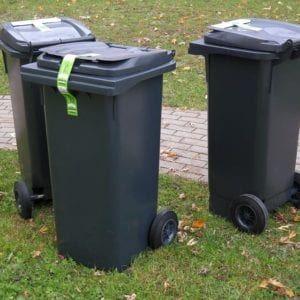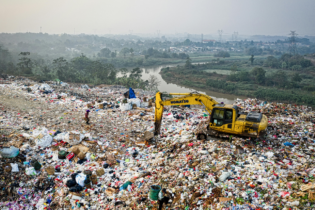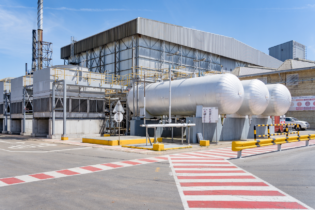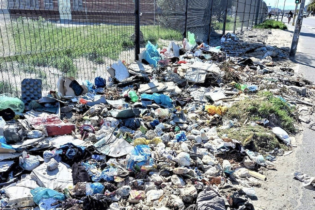
SA ranks 15th highest in the world for trash production — the US is is number one and China is in second place
A report by the World Bank details which countries produce the most garbage every day – and where South Africa fits into the picture.
According to the report, South Africa produces 54 425 tonnes of trash every day – the 15th highest rate in the world.
However, on a per capita basis – the amount produced per household every day – this equates to two kilograms, putting South Africa at number 38 globally.
By 2025, the World Bank predicts South Africa will drop to 20th on the list with 72 146 tonnes per day, as other countries’ rates of trash generation is expected to outstrip our own.
SA is expected to maintain a per capita generation of waste at two kilograms per day, which would place it at 40th on the list.
The World Bank defines municipal solid waste as including non-hazardous waste generated in households, commercial and business establishments, institutions, and non-hazardous industrial process wastes, agricultural wastes and sewage sludge.
Global picture
Understandably, the biggest and most industrialised nations in the world are the biggest producers of waste – but the USA and China are far ahead of the rest.
By 2025, the World Bank predicts that China will overtake the USA, and outstrip its waste generation by double (700,000 tonnes for the USA, and 1.4 million tonnes for China).
15 biggest waste generating countries (tonnes per day)
| # |
Country |
Waste generated (tonnes per day) |
| 1 |
USA |
624 700 |
| 2 |
China |
520 548 |
| 3 |
Brazil |
149 096 |
| 4 |
Japan |
144 466 |
| 5 |
Germany |
127 816 |
| 6 |
India |
109 589 |
| 7 |
Russia |
100 027 |
| 8 |
Mexico |
99 014 |
| 9 |
UK |
97 342 |
| 10 |
France |
90 493 |
| 11 |
Italy |
89 096 |
| 12 |
Turkey |
86 301 |
| 13 |
Spain |
72 137 |
| 14 |
Indonesia |
61 644 |
| 15 |
South Africa |
53 425 |
Because of its location and a severe lack of recycling facilities, the twin island nation of Trinidad and Tobago – along with many other Caribbean islands – hold the top dishonour of producing the most waste per capita – 14.4kgs, more than 10 times the global average.
According to local reports, uncontrollable littering, particularly of plastics, has led to a rise in mosquitoes in the region, which has brought its own health problems.
By 2025, the World Bank predicts that the islands will reduce its waste generation somewhat, though will still lead with 10kg per capita per day.
15 biggest waste generating countries (kg per capita, per day)
| # |
Country |
Waste generated (kg per capita, per day) |
| 1 |
Trinidad and Tobago |
14.40 |
| 2 |
Kuwait |
5.72 |
| 3 |
Antiga |
5.50 |
| 4 |
St Kitts |
5.45 |
| 5 |
Guyana |
5.33 |
| 6 |
Sri Lanka |
5.10 |
| 7 |
Barbados |
4.75 |
| 8 |
St Lucia |
4.35 |
| 9 |
Solomon Islands |
4.30 |
| 10 |
Tonga |
3.71 |
| 11 |
New Zealand |
3.68 |
| 12 |
Ireland |
3.58 |
| 13 |
Vanuatu |
3.28 |
| 14 |
Bahamas |
3.25 |
| 15 |
Seychelles |
2.98 |
|
|
|
| 38 |
South Africa |
2.00 |
Waste measurement warnings
Waste generation is one of the many metrics used by analysts and researchers to determine potential future problems associated urbanisation.
The World Bank noted that the amount of municipal solid waste is growing faster than the rate of urbanization in the world, with around three billion urban residents generating 1.2 kg of waste per day – and these levels are expected to double by 2025.
Almost half of global solid waste (46%) is organic material, with 17% being paper, 10% plastic, 5% glass and 4% metal. Alarmingly, the World Bank’s disposal data shows that only a paltry 1% of all waste gets recycled, with the bulk (59%) ending up in landfills or being dumped (33%)
Waste generation – and ineffective removal – can pose a massive risk, drawing parasites which can spread diseases, as well as cased of toxic waste, where harmful chemicals can be injected into the environment.
Source:
BusinessTech








